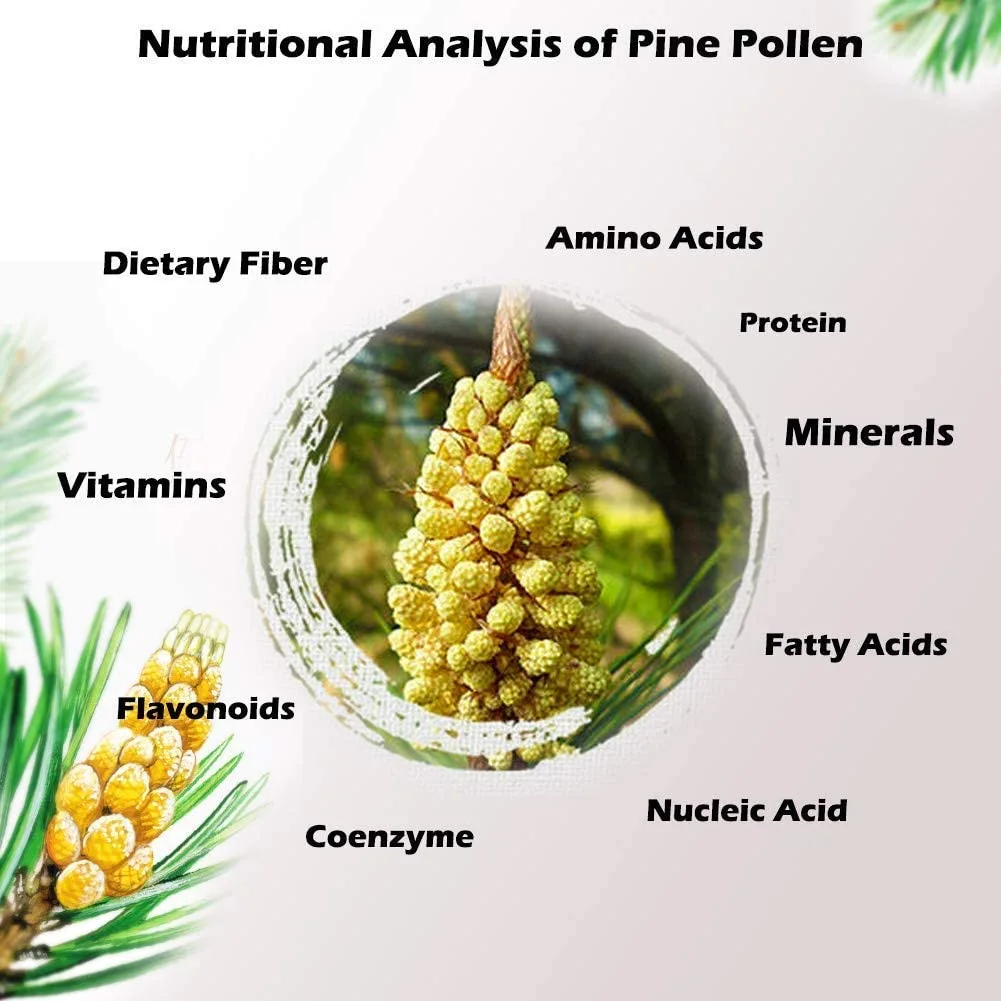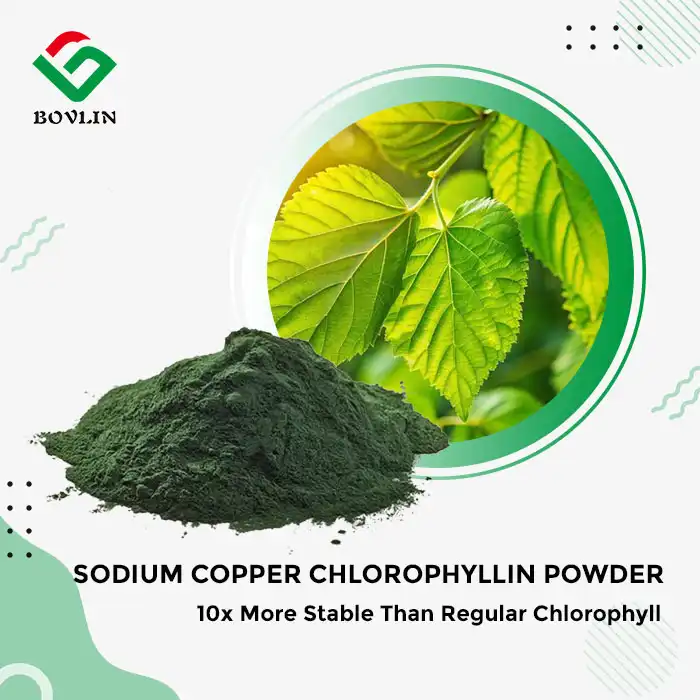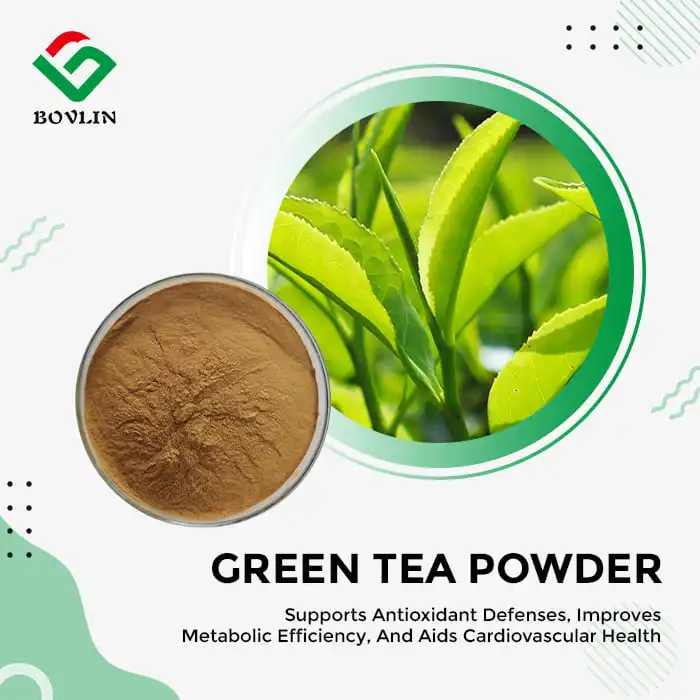What Nutrients Are Found in Cell Wall Broken Pine Pollen?
Essential Vitamins and Minerals
Cell wall broken pine pollen powder is a rich source of essential vitamins and minerals. It contains a spectrum of B vitamins, including B1, B2, B3, and B6, which play crucial roles in energy metabolism and nervous system function. Vitamin E, a powerful antioxidant, is also present in significant amounts. Mineral content includes zinc, magnesium, calcium, and selenium, all vital for various bodily functions from immune support to bone health.
Amino Acids and Proteins
One of the most remarkable aspects of cracked pine pollen is its amino acid profile. It contains all essential amino acids, making it a complete protein source. These amino acids are the building blocks of proteins, crucial for tissue repair, muscle growth, and overall cellular function. The cracked cell wall allows for better absorption of these amino acids, potentially enhancing their biological value.
Phytosterols and Phytoandrogens
Pine pollen with cracked cell walls contains an array of phytosterols and phytoandrogens. These plant-based compounds have structures similar to human hormones and may support hormonal balance. Beta-sitosterol, one of the prominent phytosterols in pine pollen, has been studied for its potential benefits in prostate health. The enhanced bioavailability of these compounds in cell-wall-broken pine pollen powder makes it a subject of interest in natural health research.

Antioxidant, Anti-Inflammatory, and Anti-Aging Properties
Free Radical Scavenging Activity
The antioxidant properties of pine pollen cracked cell wall powder are particularly noteworthy. It contains a variety of antioxidants, including flavonoids and polyphenols, which can neutralize harmful free radicals in the body. These free radicals are unstable molecules that can damage cells, leading to oxidative stress and accelerated aging. By scavenging these free radicals, the antioxidants in cell wall broken pine pollen powder may help protect cells from damage and support overall cellular health.
Inflammation Modulation
Chronic inflammation is at the root of many health issues, and pine pollen powder has shown promise in modulating inflammatory responses. The bioactive compounds in cracked pine pollen, such as brassinosteroids and gibberellins, have been studied for their anti-inflammatory properties. These compounds may help regulate the body's inflammatory pathways, potentially offering relief from inflammatory conditions and supporting overall immune function.
Cellular Regeneration and Anti-Aging Effects
The nutrient density of cell wall broken pine pollen powder makes it a potential ally in the fight against aging. Its rich content of antioxidants, vitamins, and minerals supports cellular regeneration and may help slow down the aging process at a cellular level. The presence of nucleic acids in pine pollen is particularly interesting, as these compounds are involved in DNA repair and cellular replication. By supporting these fundamental cellular processes, pine pollen powder with cracked cell walls could contribute to maintaining youthful cellular function and overall vitality.
Long-Term Wellness Applications in Natural Health Products
Immune System Support
The comprehensive nutritional profile of cell wall broken pine pollen powder makes it a valuable ingredient for immune support formulations. Its high content of zinc, vitamin C, and antioxidants can contribute to strengthening the body's natural defense mechanisms. Manufacturers of natural health products can leverage these properties to develop immune-boosting supplements that may help users maintain robust health year-round.
Adaptogenic Properties for Stress Management
Pine pollen powder is gaining recognition for its adaptogenic properties. Adaptogens are substances that help the body adapt to stress and maintain balance. The unique blend of nutrients and bioactive compounds in cracked pine pollen may help modulate the body's stress response, potentially leading to improved resilience and overall well-being. This makes it an attractive ingredient for stress management and adaptogenic formulations in the natural health product industry.
Nutritional Fortification in Functional Foods
The versatility of cell wall broken pine pollen powder extends to its applications in functional foods. Its neutral taste and fine texture make it an ideal ingredient for fortifying various food products. Manufacturers can incorporate pine pollen powder into protein bars, smoothie mixes, or nutritional supplements to enhance their nutritional value. This allows for the creation of innovative products that cater to health-conscious consumers seeking natural, nutrient-dense options.

Conclusion
Cell wall broken pine pollen powder stands out as a remarkable ingredient in the world of natural health products. Its rich nutritional profile, enhanced bioavailability, and diverse health-promoting properties make it a valuable addition to various wellness formulations. From supporting immune function to offering anti-aging benefits, this innovative form of pine pollen has the potential to revolutionize the natural health industry. As research continues to uncover its full potential, cell wall broken pine pollen powder is poised to play an increasingly significant role in promoting long-term health and wellness.
Contact Us
For more information about our cell wall broken pine pollen powder and its applications in natural health products, please contact us at sales1@bovlin.com. Our team of experts is ready to assist you in harnessing the power of this exceptional ingredient for your product line.











